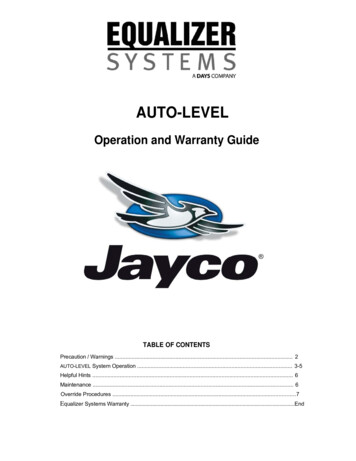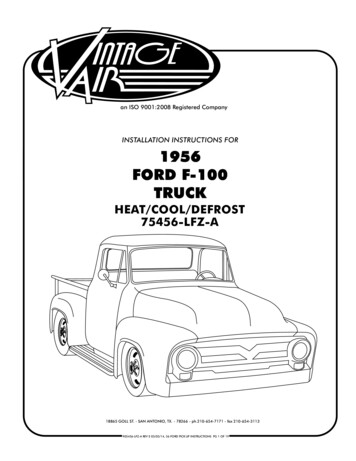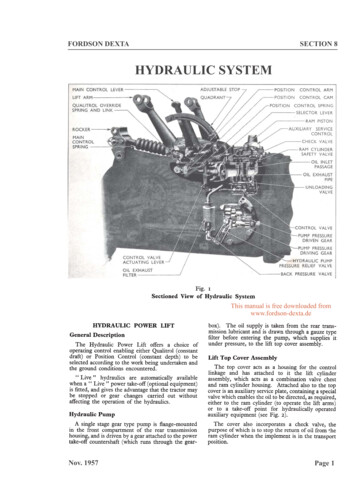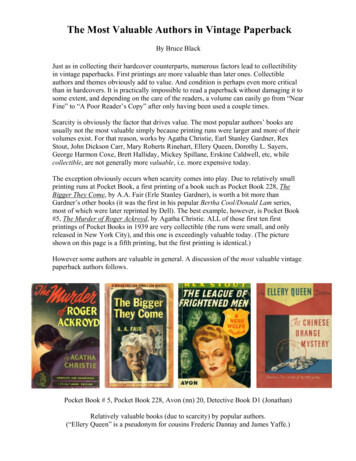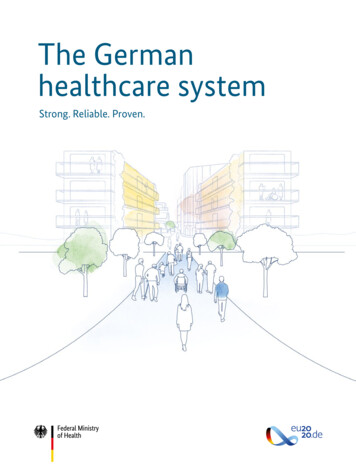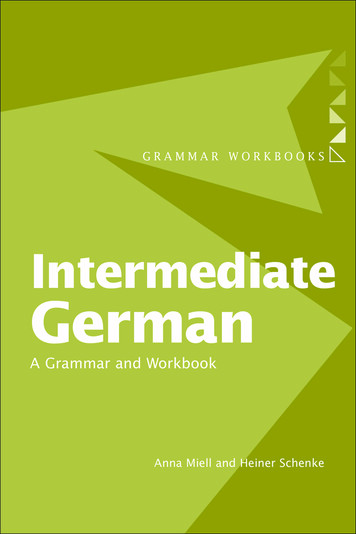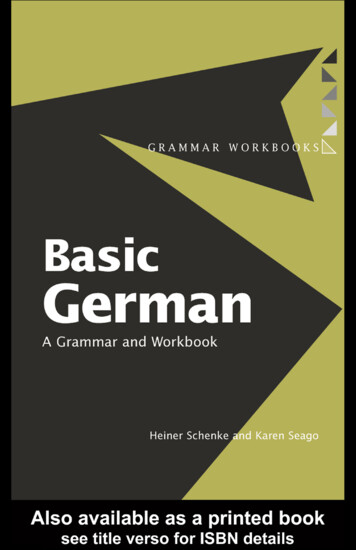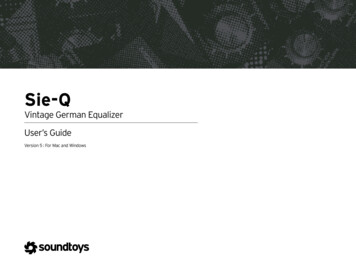
Transcription
Sie-QVintage German EqualizerUser’s GuideVersion 5 : For Mac and Windows
CONTENTS (continued)PhaseMistressSie-Q — Version 5THE BASICS / Pg. 4About Sie-Q . pg. 4THE CONTROL PANEL / Pg. 5The Low Band . pg. 5The High Band . pg. 6The Mid Band . pg. 7Drive . pg. 8ADDITIONAL INFORMATION / Pg. 9Support / Contact. pg. 9soundtoys.com2
THE BASICSSie-Q — Version 5Figure 1: Sie-Q’s Control Panelsoundtoys.com3
THE BASICS - ABOUT SIE-QSie-Q — Version 5Sie-Q is Soundtoys’ take on a classic German EQ from the 60s, thewhen driven harder, too. So we faithfully modeled its output saturationSiemens w295b. This EQ module from the Siemens Sitral consolescharacteristics so you can harness the range of colors possible with thefeatures a discrete silicon transistor design and beautifully simpleoriginal EQ’s active electronics. Try pushing the Drive control a little (orcontrols and frequency response characteristics.a lot!) to add some edgy saturation to bass, vocals and more.The w295b is the most full-featured of several swappable EQ “cassettes”that Siemens designed for the modular Sitral console. Holding one ofthe heavy cassettes really gives you a sense of how well built and bombproof these Siemens units are. Despite the Sitral consoles’ rugged buildquality, you won’t find many complete ones still in service today. In factmany have been looted by resourceful engineers who have rediscoveredthis excellent module and repurposed it as a custom rack EQ. While thew295b started its life as a broadcast tool, it has become a sought-aftersecret weapon for tracking and mixing.Overall, Sie-Q is a very gentle and musical equalizer. Its Mid bandprovides six thoughtfully-placed center frequencies that let you dialback or accentuate mid-range details. The Low band gives you a greatsounding shelf that lets you carve out space or add some bass oomph.But the star of the show is definitely the High band. It’s perfectlycontoured for adding silky high end to vocals and instruments.We’ve worked hard to capture the magic of the original hardware,and modernized it with some features that DAW users will appreciate.Unlike the original EQ which has switch-based gain controls that areadjusted in 2 and 3 dB steps, you now get a full range of smooth gaincontrol for each band. And while the w295b is famed for it’s smooth andclean sound, during our testing we found that it actually sounds greatsoundtoys.com4
THE SIE-Q CONTROL PANELSie-Q — Version 5LOWSie-Q’s Low control lets you cut or boost low frequencies, and ithas a range of -15dB to 15dB. Cutting produces a low shelf shape,while boosting creates a gentle bell-like shape with a very low centerfrequency. The graph below shows the Low band’s frequency responseat different gain settings.soundtoys.com5
THE SIE-Q CONTROL PANELSie-Q — Version 5HIGHThe High control can cut or boost high frequencies, and it has a rangeof -15 to 15 dB. When cutting, it creates a gentle low pass filter shape.When boosting, it makes a gentle bell shape with a very high centerfrequency. See the graph below for its frequency response at differentgain settings.soundtoys.com6
THE SIE-Q CONTROL PANELSie-Q — Version 5MID FREQUENCYMID GAINThe Mid band provides a useful bell filter for accentuating or softeningThe Mid Gain control lets you cut or boost at the selected frequencymid-range details. The original Siemens mid band controls were markedfrom -8 to 8 dB. As you can see in the graph below, gain settings closer“präsenz” (that’s “presence” in German, but you probably guessed that).to zero produce a wide and gentle curve, while more extreme settingsTrue to its original German name, the Mid Frequency control offers sixproduce a more focused curve. This is what is known as a proportionalfixed center frequencies that are useful for sculpting the mid-rangeQ equalizer.presence of vocals and instruments: 700 Hz, 1000 Hz, 1,500 Hz, 2,300Hz, 3,500 Hz and 5,600 Hz. The graph below shows an example of thecurve shape at the 1,500 Hz position.soundtoys.com7
THE SIE-Q CONTROL PANELSie-Q — Version 5DRIVEThe Drive control is unique to Sie-Q and not found in the originalSiemens w295b EQ. This knob lets you cut or boost the gain before theEQ’s output amplifier and thereby control the amount of saturationproduced by the EQ’s active circuit.The Drive control’s range is -15 to 15 dB, which refers to the amount ofgain added before the output amplifier. For positive drive settings (0-15dB) there is also automatic gain reduction applied after the amplifier(saturation) stage. This “auto gain” stage reduces the signal levelproportionally to the amount of Drive applied (it is not dynamic like acompressor or limiter). This helps to keep output levels from getting toohigh as you turn up the Drive control.soundtoys.com8
ADDITIONAL INFORMATIONSie-Q — Version 5SUPPORT INFORMATIONNow that you’ve taken the time to learn all about Sie-Q, have fun,experiment, and make greatness! If our plug-ins helped you take yourproduction to the next level, let us know, we’d love to hear from youand what you were able to create with our software.If along the way however you should run into any hiccups or anythingunexpected, we offer free technical support for all registered users.Our FAQ contains many helpful answers. you can find it at:http://support.soundtoys.comIf you need further support you can find our Customer Supportcontact form at:Please have the following information available to help assist oursupport team: The product version and serial number The version number of your audio system (e.g ProTools11.2.1, Cubase 8.0.5, Logic 10.2.0, Cakewalk Sonar X3) Your interface/hardware (e.g. Mbox Pro, Apogee Quartet,RME Fireface, etc.) Your computer and operating system info (e.g. MacPro OS X10.9.5, Windows 7 SP1, Windows 8.1, etc.) A detailed description of the ORATE CONTACTYou can also reach our support staff by e-mail at:support@soundtoys.comSoundtoys, Inc.PO Box 528If neither of those options work for you, our office can be reached viaBurlington, VT 05402telephone at:Phone: 802-951-97001-800-COOL-EFXsoundtoys.comFax: 802-951-97999
Sie-Q — Version 5Wave Mechanics, Soundtoys, Sie-Q, Crystallizer, EchoBoy, FilterFreak, PhaseMistress,PitchDoctor, PurePitch, SoundBlender, Speed, Decapitator, PanMan, Tremolator, DevilLoc, Radiator, MicroShift, PrimalTap, and their respective logos are all trademarks ofSoundtoys, Inc.All other trademarks are the property of their respective owners, which are in no wayassociated or affiliated with Soundtoys. These trademarks are used only for historicalreference or to identify products whose sounds or tone were studied in the developmentof our plug-ins. 2016 Soundtoys Inc. All rights reserved.
soundtoys.com 6 THE SIE-Q CONTROL PANEL The High control can cut or boost high frequencies, and it has a range of -15 to 15 dB. When cutting, it creates a gentle low pass filter shape.


